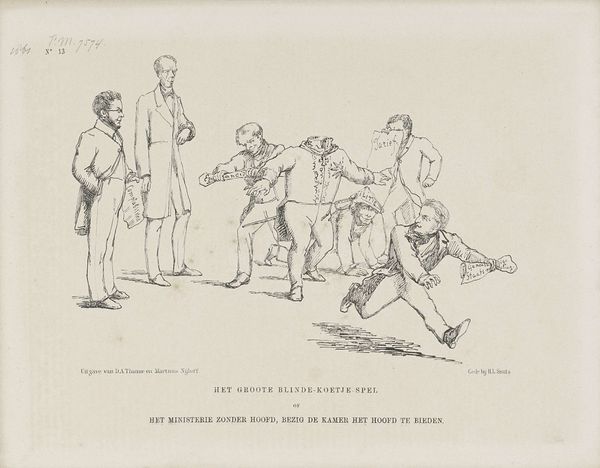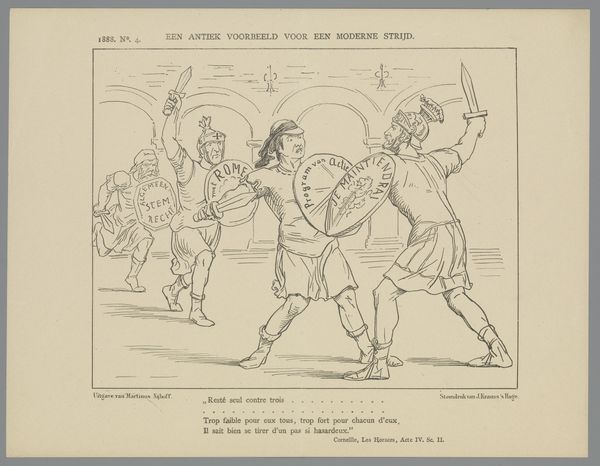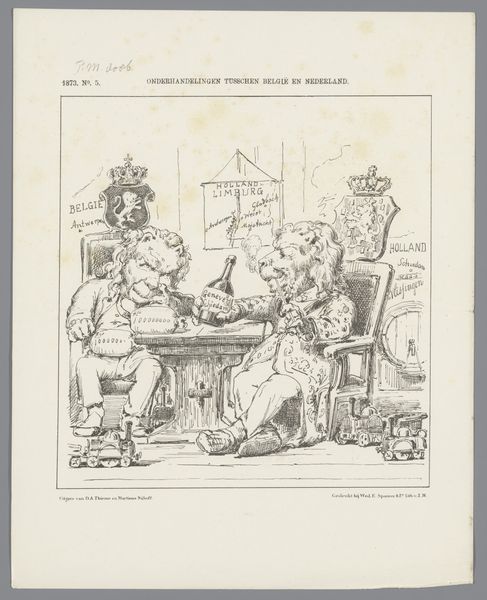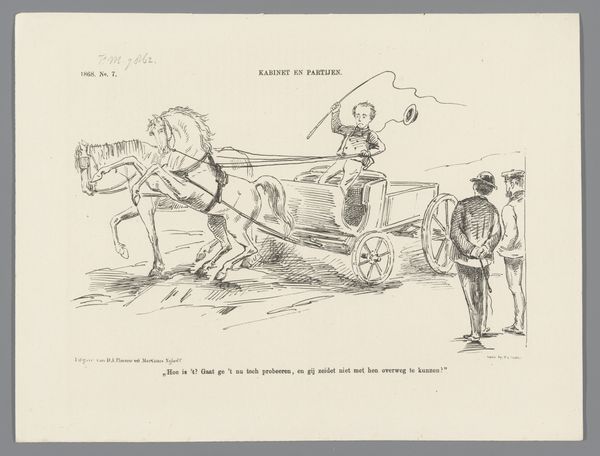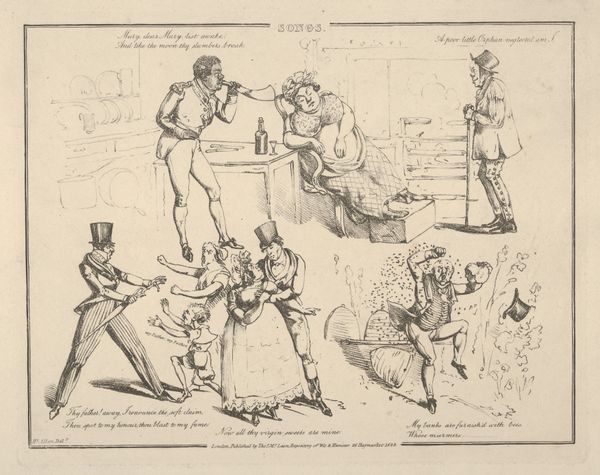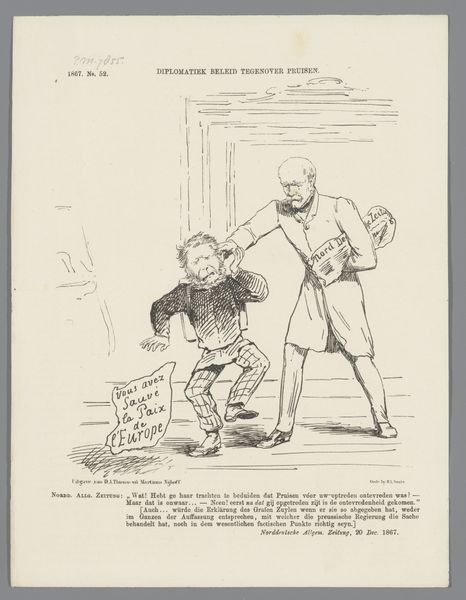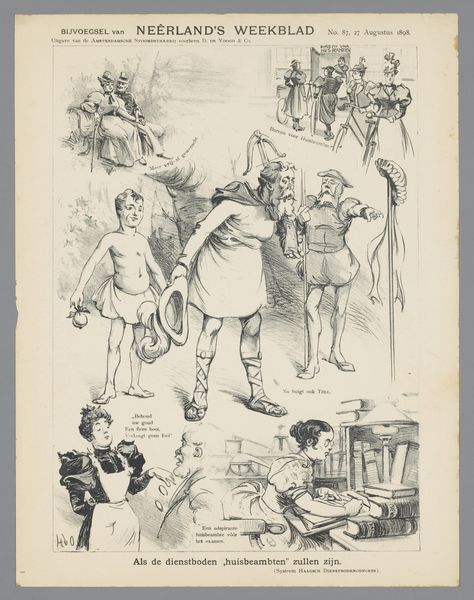
drawing, print
#
drawing
#
comic strip sketch
#
quirky sketch
# print
#
caricature
#
sketch book
#
personal sketchbook
#
idea generation sketch
#
sketchwork
#
thumbnail sketching
#
comic
#
sketchbook drawing
#
storyboard and sketchbook work
#
sketchbook art
Dimensions: height 215 mm, width 275 mm
Copyright: Rijks Museum: Open Domain
Johan Michaël Schmidt Crans made this print in 1871, using line engraving on paper. It satirizes a perceived 'marriage' or alliance within the Dutch Second Chamber, likely between a member of parliament and a baker's daughter, or perhaps representing a coalition with economic interests. Prints like this flourished in the Netherlands during a period of political and social change. The late 19th century saw the rise of new political ideologies and debates over social reforms. Caricatures in popular journals helped to shape public opinion and provided a visual commentary on the issues of the day. The artist employs recognizable imagery, such as the baker with his tools, and the parliamentarian in formal attire, to critique those involved. The print's effectiveness relies on its viewers' understanding of the political context and the social stereotypes being invoked. To fully understand this image, we can consult parliamentary records, period newspapers, and biographical information about the figures mentioned in the print's captions. The historian's role is to unearth these layers of meaning and show how art is always embedded in its specific time and place.
Comments
No comments
Be the first to comment and join the conversation on the ultimate creative platform.

